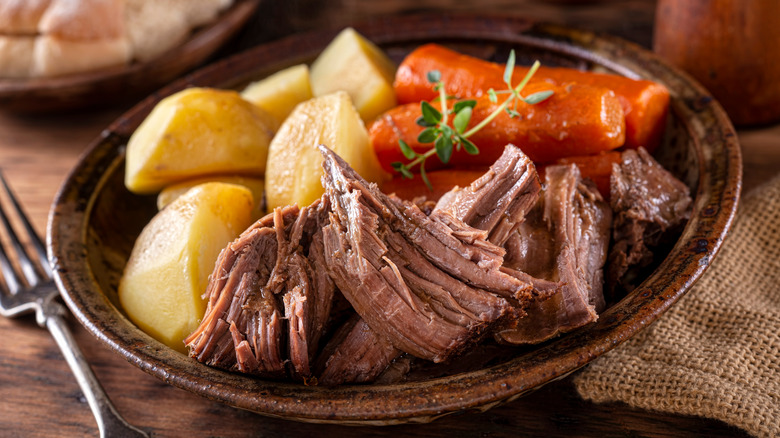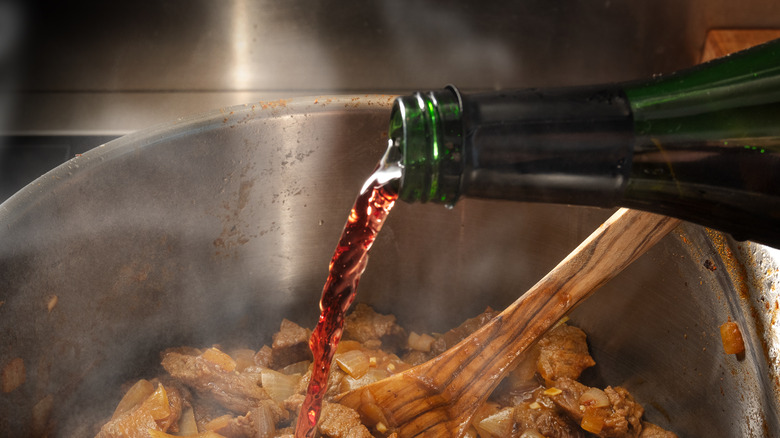The Best Way To Deglaze Pot Roast
There's no cold-weather main dish more comforting than pot roast, and if you've ever enjoyed this preparation of a tender, braised piece of beef, we think you'll agree. Usually braised inside a covered pot like a Dutch oven — or sped up inside an Instant Pot — pot roast is typically joined by hearty winter vegetables such as carrots, potatoes, and onions, or even a packet of ranch dressing for Mississippi-style flair.
According to Cook's Illustrated, a good pot roast turns out moist, succulent, and tender, preferably accompanied by a rich pan sauce that's excellent ladled over buttered egg noodles or mashed potatoes. And in order to get the most flavor into that sauce, which will come together all of its own accord inside the hot, veggie-laden pot, it's a great idea to deglaze the pot you'll cook the roast in. This should be done after you've seared the meat on all sides, so that all those crusty brown bits make their way into the gravy over the course of braising.
Add some acidity to your deglazing liquid
If you're not familiar with deglazing, the process is pretty simple. It involves adding a small amount of liquid (wine, stock, water, vinegar, beer, etc.) to the bottom of a pan in which you've seared meat or vegetables, which, when exposed to concentrated heat, leaves behind little bits of proteins and carbohydrates that brown and crisp in the pan. These browned bits, known as fond, are full of delicious caramelized flavor, and when you add that liquid — and scrape and stir with a spoon — it will lift from the pan and incorporate into the sauce you're creating (via Food Network).
If you've never taken the step of searing your pot roast on all sides before braising, you definitely should, advises Kitchn. Doing so will create that beautiful fond, which will just be begging to be deglazed. But don't just use plain old beef broth to do so, the outlet counsels. While that beefy flavor will be tasty, it will also be a little one-note. Instead, your deglazing liquid should contain a bit of acidity. You can use red wine, or even red wine vinegar, for that initial deglaze, and then pour in some beef broth and other flavorings such as tomato paste and fresh herbs before you cover the pan and braise the meat. The result? A rich pan sauce that will have depth of flavor and will perfectly accent the tender meat.

